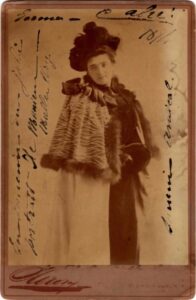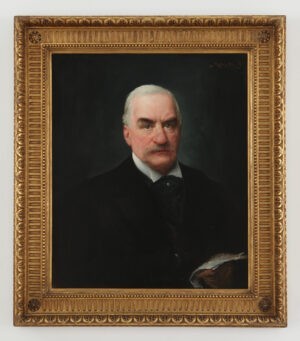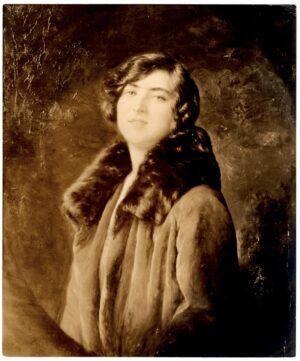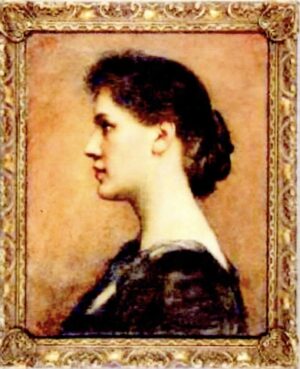Calvé (actually Rose Emma Calvet) was born on 15 August 1858 in Decazeville, Aveyron, was a French operatic soprano and probably the most famous French female opera singer of the Belle Epoque. She first sang Carmen at the Metropolitan Opera House, New York, in the autumn of 1893. She worked in New York at the Met from 1893-1904, and at the Metropolitan Opera Company 1907-1908. She then retired, but gave concerts until 1918. In March 1910 she married Mr. A. Gaspari. Her home was Chateau de Cabrieres, Aguessac, Avevron, France. She died in Montpellier on 6 January 1942.
Bibliography:
A. Gallus, Emma Calvé: Her Artistic Life, New York, 1897
—

The signed photograph of the sitter inscribed to the artist.
Painted in late 1893 or early 1894. Muller-Ury held a reception at his studio at 3pm on April 24th, 1894, for invited guests to view the picture. Calvé signed a Carte de Visite of herself in day dress from the Sarony studio, 87 Union Square, New York, which she gave to the artist inscribed “En souvenir du joli portrait de Monsieur Muller-Ury, souvenir amical, Emma Calvé 1894”.





